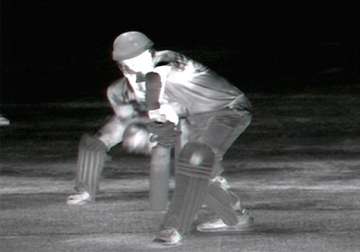Chester-Le-Street, Aug 10: Protective coating should be removed from cricket bats for Hot Spot to achieve “optimum” results, the technology's inventor has said.
The current Ashes series between England and Australia has been blighted by a string of contentious decisions, with Hot Spot's thermal-imaging cameras appearing not to detect some edges behind.
Warren Brennan, the managing director of the company which owns Hot Spot, has carried out internal testing over the past three days and said he achieved “conclusive findings.”
“The type and thickness of the protective coating unquestionably affects the thermal signature of the Hot Spot system,” BBG Sports said in a statement released late Friday. “In layman's terms, the protective coating definitely diminishes Hot Spot marks.”
“BBG Sports believes that in order to achieve optimum Hot Spot results, then the removal of protective coating from bats edges needs to occur,” the statement continued.
“This will allow for the best thermal signatures between cricket balls and natural timber cricket bats.”
Brennan says he will pass results of tests carried out this week to the International Cricket Council.
Hot Spot became part of the Decision Review System from 2009, but only in this series have doubts crept in about the effectiveness of the technology.
Australian broadcaster Channel Nine claimed this week that silicon tape might have been attached to the edges of bats during the Ashes series to “fool” Hot Spot. Those allegations have been angrily denied by England and Australia, and the ICC isn't investigating the claims.
“At the end of the day, no technology is 100 percent perfect, however at BBG Sports we are continuously researching and developing our products to provide the best technological service for sport,” Brennan said.
